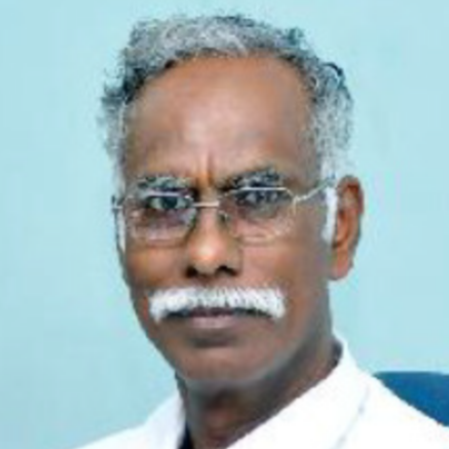
K. Somasundaram
Work place: Department of Computer Science and Applications, The Gandhigram Rural Institute - Deemed University, Tamilnadu, India
E-mail: ka.somasundaram@gmail.com
Website:
Research Interests: Image Compression, Image Manipulation, Image Processing, Medical Image Computing
Biography
Somasundaram K. received his Master of Science (M. Sc) degree in Physics from the University of Madras, Chennai, India in 1976, the Post Graduate Diploma in Computer Methods from Madurai Kamaraj University, Madurai, India in 1989 and the Ph.D degree in theoretical Physics from Indian Institute of Science, Bangalore, India in 1984. He is presently working as Professor at the Department of Computer Science and Applications, Gandhigram Rural Institute, Dindigul, India. He was senior Research Fellow of Council Scientific and Industrial Research (CSIR) Govt. of India, in 1983. He was previously a Researcher at the International Centre for Theoretical Physics, Trieste, Italy and Development Fellow of Commonwealth Universities, at Edith Cowan University, Perth, Australia. His research interests are image processing, image compression and medical imaging. He is also a member of IEEE USA.
Author Articles
Performance of Medical Image Processing Algorithms Implemented in CUDA running on GPU based Machine
By T. Kalaiselvi P. Sriramakrishnan K. Somasundaram
DOI: https://doi.org/10.5815/ijisa.2018.01.07, Pub. Date: 8 Jan. 2018
This paper illustrates the design and performance evaluation of few algorithms used for analysing the medical image volumes on the massive parallel graphics processing unit (GPU) with compute unified device architecture (CUDA). These algorithms are selected from the general framework, devised for computer aided diagnostic (CAD) system. The CAD system used for analysing large medical image datasets are usually a pipeline processing that includes a variety of image processing operations. A MRI scanner captures the 3D human head into a series of 2D images. Considerable time spent in pre and post processing of these images. Noise filters, segmentation, image diffusion and enhancement are few such methods. The algorithms are chosen for study requires local information, available in few pixels or global information available in the entire image. These problems are best candidates for GPU implementation, since the parallelism is naturally provided by the proposed Per-Pixel Threading (PPT) or Per-Slice Threading (PST) operations. In this paper implement the algorithms for adaptive filtering, anisotropic diffusion, bilateral filtering, non-local means (NLM) filtering, K-Means segmentation and feature extraction in 1536 core’s NVIDIA GPU and estimated the speed up gained. Our experiments show that the GPU based implementation achieved typical speedup values in the range of 3-338 times compared to conventional central processing unit (CPU) processor in PPT model and up to 30 times in PST model.
[...] Read more.MRI of the Brain in Moving Subjects Application to Fetal, Neonatal and Adult Brain
By P. Narendran V.K. Narendira Kumar K. Somasundaram
DOI: https://doi.org/10.5815/ijitcs.2012.10.05, Pub. Date: 8 Sep. 2012
Imaging in the presence of subject motion has been an ongoing challenge for magnetic resonance imaging (MRI). In this paper some of the important issues regarding the acquisition and reconstruction of anatomical and DTI imaging of moving subjects are addressed; methods to achieve high resolution and high Signal to Noise Ratio (SNR) volume data. Excellent fetal brain 3D Apparent Diffusion Coefficient maps in high resolution have been achieved for the first time as well as promising Fractional Anisotropy maps. Growth curves for the normally developing fetal brain have been devised by the quantification of cerebral and cerebellar volumes as well as someone dimensional measurements. A Verhulst model is to describe these growth curves, and this approach has achieved a correlation over 0.99 between the fitted model and actual data.
[...] Read more.3D Brain Tumors and Internal Brain Structures Segmentation in MR Images
By P.NARENDRAN V.K. Narendira Kumar K. Somasundaram
DOI: https://doi.org/10.5815/ijigsp.2012.01.05, Pub. Date: 8 Feb. 2012
The main topic of this paper is to segment brain tumors, their components (edema and necrosis) and internal structures of the brain in 3D MR images. For tumor segmentation we propose a framework that is a combination of region-based and boundary-based paradigms. In this framework,segment the brain using a method adapted for pathological cases and extract some global information on the tumor by symmetry based histogram analysis. We propose a new and original method that combines region and boundary information in two phases: initialization and refinement. The method relies on symmetry-based histogram analysis.The initial segmentation of the tumor is refined relying on boundary information of the image. We use a deformable model which is again constrained by the fused spatial relations of the structure. The method was also evaluated on 10 contrast enhanced T1-weighted images to segment the ventricles,caudate nucleus and thalamus.
[...] Read more.Other Articles
Subscribe to receive issue release notifications and newsletters from MECS Press journals